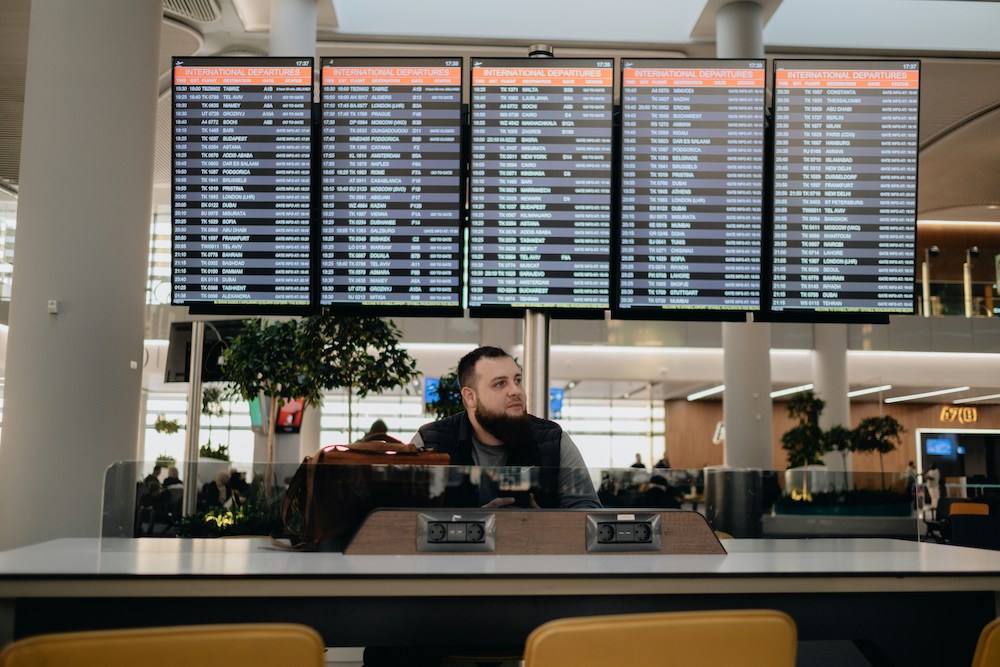What a Frozen Government Means for Meetings, Travel—and Attendee Confidence
When flights slow, meetings stop moving. And right now, the U.S. government shutdown is quietly threatening the most essential logistics layer in the event industry: the ability to get people where they need to be.
As the shutdown drags past its second week, air travel in the U.S. is already showing signs of strain. Staffing shortages among air traffic controllers and Transportation Security Administration (TSA) screeners have led to localized slowdowns and even tower shutdowns—from Burbank, California, to Nashville, Philadelphia, and Boston. While roughly 92% of flights are still taking off on time, analysts warn that this fragile equilibrium could collapse fast.
“The risk of wider impacts to the U.S. aviation system is growing by the day,” travel industry analyst Henry Harteveldt warned this week. “If the government remains shut down into November, it could disrupt—and possibly ruin—millions of Americans’ Thanksgiving holidays.”
For meeting planners, that warning isn’t abstract. It’s an operational red flag.
Ground Control to Planners: Expect Turbulence
The shutdown, which began October 1 after lawmakers failed to reach a funding deal, has left tens of thousands of federal workers—air traffic controllers, TSA officers, and FAA support staff—working without pay. The FAA is already understaffed by about 3,000 controllers nationwide, and the longer the political stalemate drags on, the thinner that margin gets.
When a few controllers call out sick, small facilities can’t just “borrow” replacements from other towers; each controller must be certified for the specific airspace. That’s what happened this week at Burbank Airport, where the tower shut down for several hours, forcing two-and-a-half-hour delays.
“It’s not like we can just fly someone in to fill the gap,” said Nick Daniels, president of the National Air Traffic Controllers Association. “There’s not enough people there. There’s no overtime, and you have to be certified in that facility.”
The same goes for TSA officers, many of whom are already struggling to cover basic expenses as they work without pay. Some have started calling in sick. Others are turning to food banks and relief programs organized by airports themselves. Tampa International Airport, for example, launched “Operation Bald Eagle 2,” providing food pantries, bus passes, and utility support to keep 1,100 unpaid federal employees on the job.
The Ripple Effect: When a Flight Delay Becomes a Conference Crisis
The air travel system is brittle even in the best of times, and for planners, that brittleness can mean more than just late arrivals. A single tower staffing issue in Chicago or Boston can cascade into a national domino effect of missed connections, rescheduled sessions, and no-shows at key meetings.
In past shutdowns—like the 35-day standoff of 2018–2019—some TSA checkpoints closed entirely, and airports like Miami International had to shut down terminals. Experts say it’s a scenario that could repeat itself if the current impasse continues into mid-October.
“This is more than just an inconvenience to the traveler,” said Jeffrey Price, professor of aviation at Metropolitan State University of Denver. “The system becomes brittle. The longer it goes, the more the traveler—and by extension, the planner—is going to notice it.”
The Attendee Experience: Delayed, Distracted, and Disillusioned
For attendees, the experience of traveling through a partially frozen aviation system can do lasting reputational damage to the event itself—even if organizers had nothing to do with it. A 2023 U.S. Travel Association study found that 46% of attendees blamed “poor travel experience” as a key reason for skipping repeat events.
As lines lengthen and frustrations rise, travelers’ perception of risk grows. That can trigger a wave of preemptive cancellations, especially among corporate or association groups wary of stranding their teams.
Planners are already being advised to monitor flight status updates closely, communicate early and often with attendees, and ensure contingency clauses are in place with venues and airlines. The Department of Transportation’s Airline Customer Service Dashboard remains a crucial resource, showing what each carrier will—and won’t—cover in case of cancellations.
Still, there’s only so much even the best-planned event can do when political gridlock grounds the country.
If Your Flight’s Delayed, Your Playbook Should Be:
With the federal government shuttered and major agencies running on fumes, travel disruptions are becoming everyone’s problem. But for the meetings industry, the solution is strategic empathy and decisive communication.
That means anticipating chaos, not reacting to it.
1. Map your choke points. Identify airports, federal facilities, and government-funded venues connected to your event. Flag the ones most vulnerable to shutdown ripple effects.
2. Communicate early—and often. Send proactive updates to attendees about flight status, TSA delays, and venue readiness. Keep communication centralized through your event app or text alerts.
3. Push pre-event check-ins reminding attendees to verify flights before leaving home.
4. Keep flexible rebooking options visible in the event app or email series.
5. Build in flexibility. Add buffer days before and after your event dates. Allow for late arrivals, early departures, or virtual participation for stranded attendees.
6. Review contracts now. Confirm your cancellation, attrition, and rebooking clauses with hotels, venues, and transportation partners. Know where you stand before disruption hits.
7. Prep a hybrid backup. Test live streaming or on-demand session options so your program can continue even if key speakers or attendees can’t make it.
8. Coordinate with DMOs and hotels. Ask about extended room blocks, flexible check-in times, and contingency room availability for delayed travelers.
9. Appoint a “travel ops lead.” Assign one team member to monitor FAA updates, airline alerts, and TSA advisories—and to act as the single point of contact for attendee travel issues.
10. Secure local resources. Partner with local transportation providers, caterers, and staffing agencies to ensure essential services stay on track if federal workers or systems go offline.
11. Stay calm and visible. Communicate confidence. The more steady your tone, the more your attendees will trust your leadership—especially when travel chaos dominates the headlines.
Politics in the Air, Pressure on the Ground
As union leaders warn of burnout and unpaid workers question how long they can hold on, even a short-term extension of the shutdown’s timeline could impact the upcoming holiday meeting season. The ripple effects reach beyond the airport gates: delayed federal reimbursements for convention centers, suspended travel grants, and frozen visas could complicate both domestic and international attendance.
It’s not just a political stalemate anymore—it’s a business continuity issue for an entire industry.
As one aviation expert put it bluntly: “Every day the government stays closed, the runway gets shorter.”
For meeting planners, that means preparing to land safely anyway.
Any thoughts, opinions, or news? Please share them with me at vince@meetingsevents.com.
Photo by Tahir osman For Unsplash+





